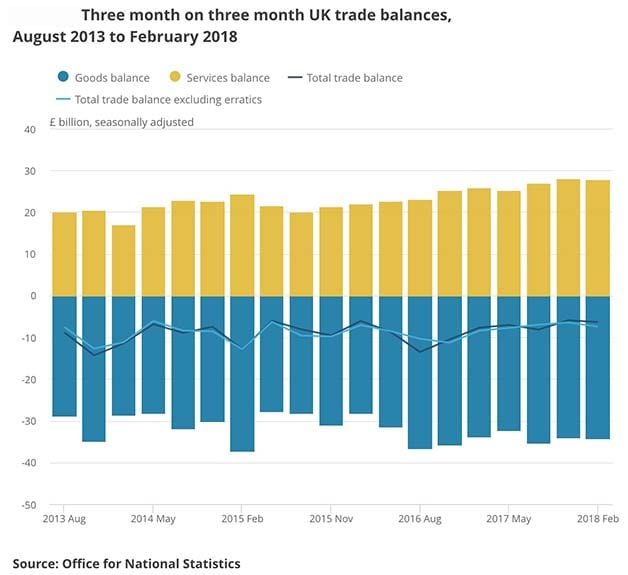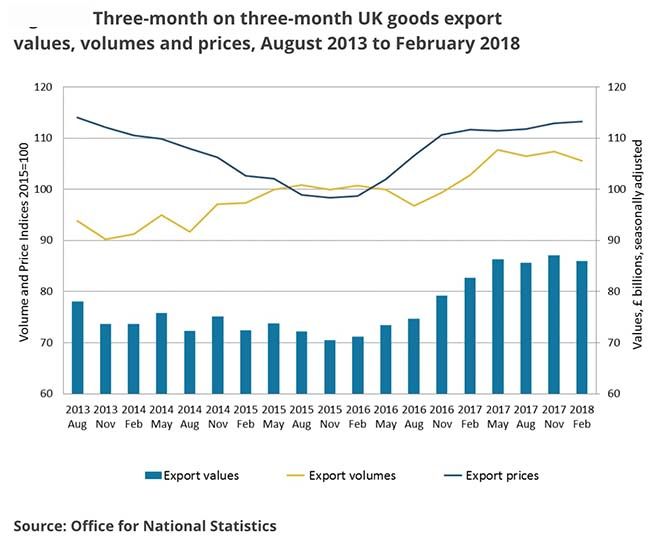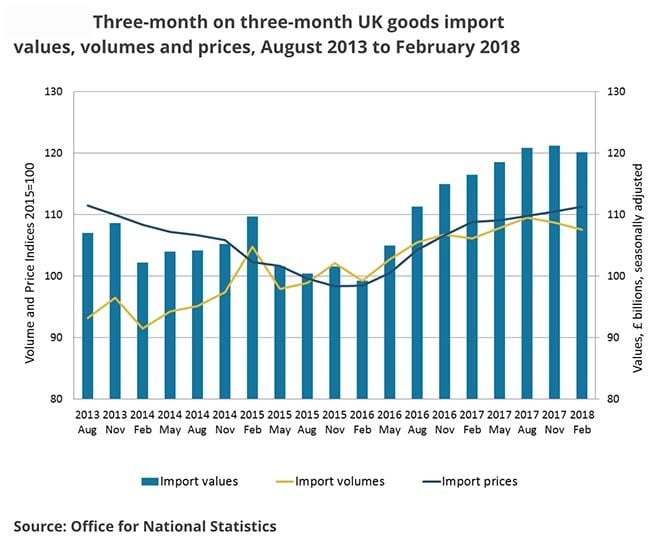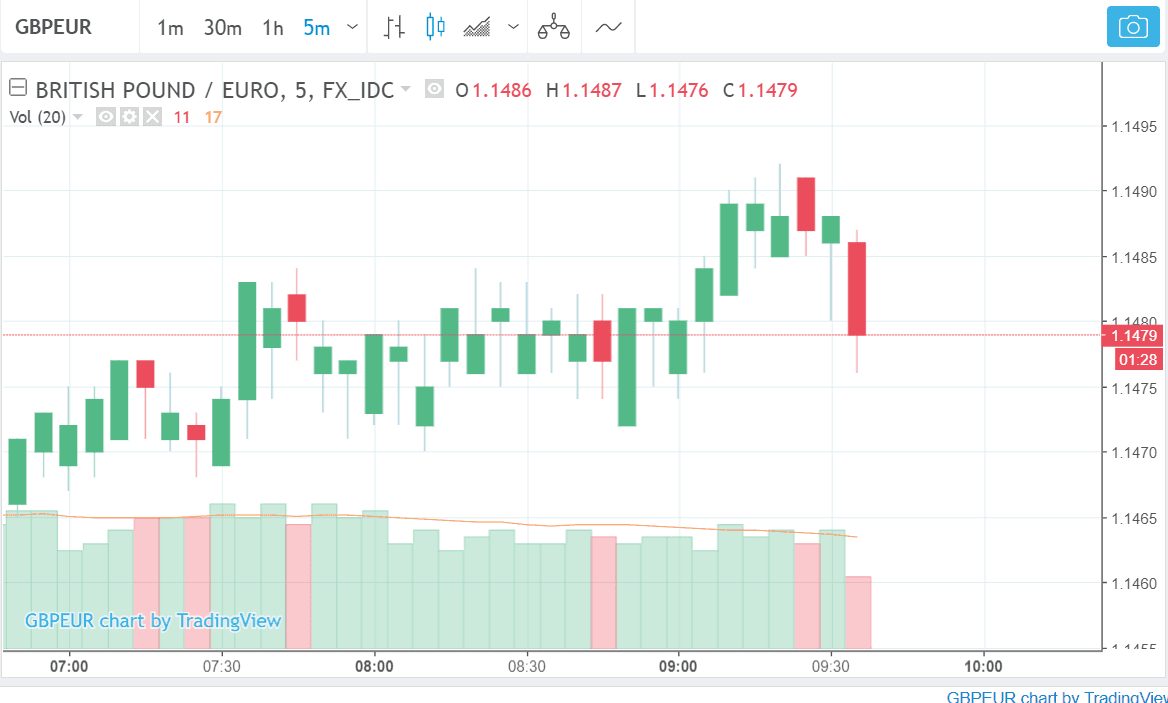UK Trade Data Beats Estimates as Imports Slow
- UK trade balance data shows trade deficit narrowing in February
- Result of -0.97bn way below analysts' predictions
- But one economist remains unimpressed by the level of UK exports
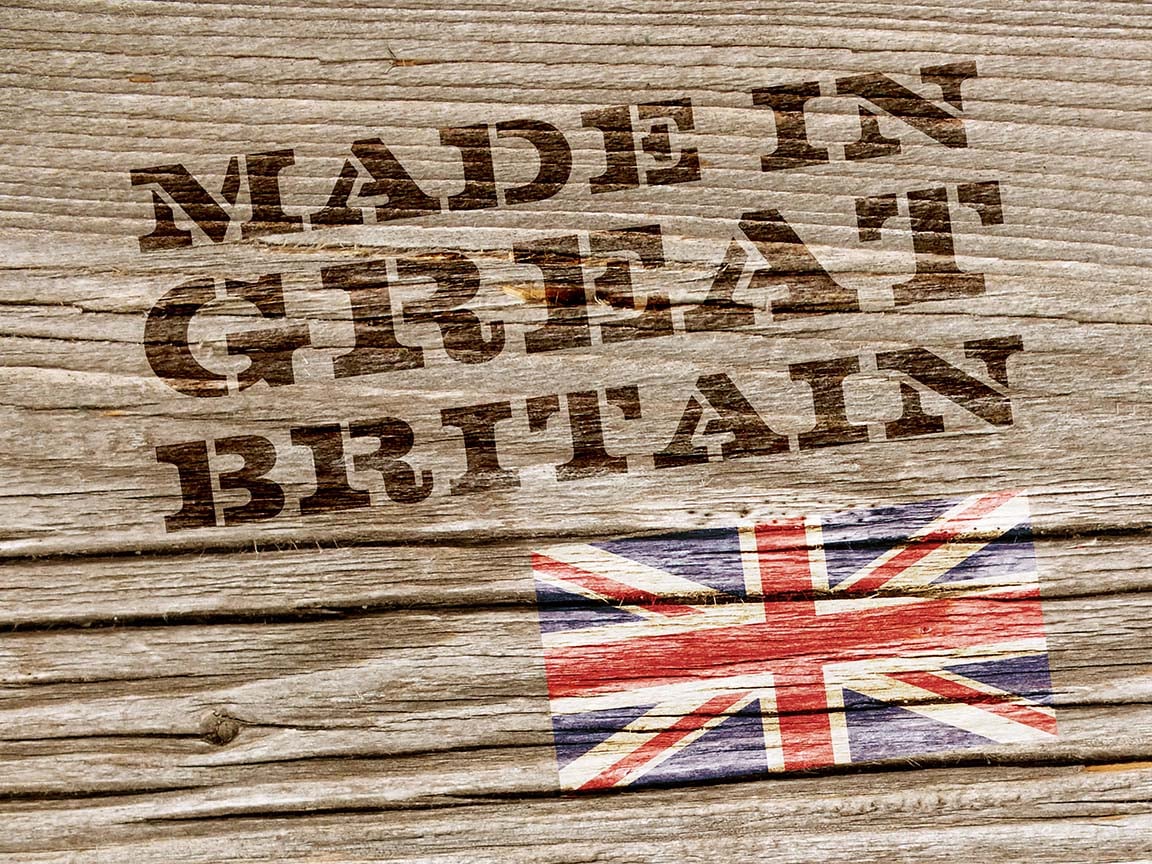
© Adobe Stock
The UK trade deficit narrowed more-than-expected to -0.97bn in February, according to data from the Office of National Statistics (ONS) released at 9.30 GMT today.
The result easily beat expectations from economists that suggested that the deficit would narrow to -2.6bn (GBP) compared to -3.07bn in January.
It was the smallest trade deficit recorded since September 2017, as imports slumped -4.8% from a record high to 53.4bn while exports decreased at a slower -1.3% to 52.4bn.
However, as can be seen, exports remain elevated and are certainly contributing to the overall UK trade book:
The strong improvement in the UK's trade position did however not have a sizeable impact on Sterling which might have taken cues from a disappointing set of UK manufacturing and industrial production numbers.
"A soft reading in both industrial and manufacturing production has done little to move the Pound, with the narrowing trade deficit bolstering positive sentiment around Sterling and painting a positive GDP picture of the domestic economy," says Nish Parekh, senior trader at Silicon Valley Bank. "The long term trend for GBPUSD still points upwards and the weaker-than-expected reading appears to be a small blip in the road to policy tightening, with the market looking towards a potential rate hike from the BOE on May 10th."
The Pound came off its 1.1490 highs versus the Euro, falling to 1.1473 after the releases.
The ONS, which quotes the deficit over a 3-month time period instead of purely for the month, said that the total UK trade deficit had actually widened by 0.4bn to -6.4bn in the three months to February 2018.
They attributed the changes as within the normal range of expectations.
"This is a relatively small movement in the UK trade balance, which across the past 12 months has ranged between a £2.8 billion narrowing in the three months to October 2017 and a £3.2 billion widening in the three months to January 2018," says the ONS.
Analyst Samuel Tombs with Pantheon Macroeconomics is not impressed by the trade data saying if we look underneath the hood, "Britain’s external deficit is far less healthy than February’s headline figure - the smallest since September - suggests".
Tombs notes half of the improvement in the trade deficit in February was due to a sharp fall in imports of erratic items with the deficit excluding erratics, £2.0B, was only a bit smaller than its 12-month average, £2.4B.
Excluding oil and erratics, the volume of goods imports was 0.3% higher in the three months to February than in the previous three months, slightly exceeding the 0.2% increase in goods exports.
"As a result, net trade still isn’t making a positive contribution to GDP growth, despite sterling’s large depreciation. Exporters have adopted a cautious strategy and have sought to increase profit margins by raising their Sterling prices by 13% over the last two years, rather than attempting to increase their share of foreign markets," says Tombs.
In addition, the economist says domestically-produced alternatives for many of the goods that the U.K. imports aren’t available, so consumers have had to swallow the 12% jump in import prices over the last two years.
One of the positive effects of rising import costs is there is often a displacement in demand for domestically-produced alternatives which are assumed to be cheaper.
But, "with nearly two years having elapsed since the biggest fall in sterling, lingering hopes that the U.K. might still enjoy a period of growth led by net exports look unduly optimistic," says Tombs.
Get up to 5% more foreign exchange by using a specialist provider to get closer to the real market rate and avoid the gaping spreads charged by your bank when providing currency. Learn more here.
